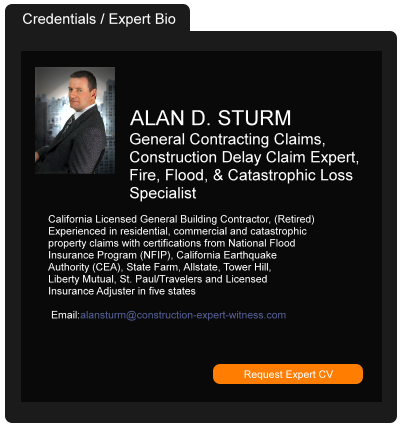Higgins, Hopkins, McLain & Roswell, LLC Announces Leadership Changes and New Vision for Growth
January 21, 2025 —
David McLain - Higgins, Hopkins, McLain & Roswell, LLCHiggins, Hopkins, McLain & Roswell, LLC (“HHMR”) is excited to announce several significant developments as the firm transitions into an exciting new chapter of growth and innovation. Sheri Roswell, one of the firm’s founding members, is stepping out of ownership to serve as “Of Counsel,” continuing her vital work with clients and strengthening relationships that have been the cornerstone of HHMR’s success. Her tireless contributions since the firm’s inception have helped establish HHMR as a leader in Colorado’s construction law landscape.
“Sheri has been a pillar of HHMR since day one. Her commitment to our clients and her unwavering dedication to the firm’s success have left an indelible mark. We are excited for her to continue contributing her expertise and leadership in this new capacity,” said David McLain at the firm’s recent holiday celebration.
Read the court decisionRead the full story...Reprinted courtesy of
David McLain, Higgins, Hopkins, McLain & Roswell, LLCMr. McLain may be contacted at
mclain@hhmrlaw.com
BLOK, a Wired UK Hottest 100 Housing Market Startup, Gets Funding from a Renowned Group of Investors
October 11, 2017 —
Aarni Heiskanen - AEC BusinessBlok, listed as one of the Hottest 100 European Startups by Wired UK, has secured several renowned investors to promote the company’s product development and marketing in its second round of financing.
The Helsinki-based startup company aims to revolutionize the housing market through automation and artificial intelligence. Blok believes that the future of the housing market will be on the Internet, where intelligent technology is opening up new opportunities for disrupting traditional business models.
Read the court decisionRead the full story...Reprinted courtesy of
Aarni Heiskanen, AEC BusinessMr. Heiskanen may be contacted at
aarni@aepartners.fi
What Makes a Great Lawyer?
February 06, 2019 —
Danielle Carter - Bremer Whyte Brown & O'Meara LLPGood lawyers have mastered and understand the analytical and communication skills taught in law school, but great lawyers build upon this foundation by continuing to develop traits and skills for success. Here are five tips to help good lawyers enhance client outcomes and excel within their profession.
Be Objective
Lawyers cannot be effective advocates unless they are first willing to perceive and analyze problems from all angles. Lawyers must discern strong claims from weak; urgent concerns from long-term; and large issues from small. A lawyer who adopts the tone of an emotionally-charged client risks alienating the court and jury.
Read the court decisionRead the full story...Reprinted courtesy of
Danielle Carter, Bremer Whyte Brown & O'Meara LLPMs. Carter may be contacted at
info@bremerwhyte.com
In Search of Cement Replacements
October 19, 2017 —
Aarni Heiskanen - AEC BusinessCould we replace cement as the vital element in concrete some day? We look at two alternative answers to this question.
The Problems with Cement
Portland cement dominates in the construction and road building industries. From an environmental point of view, cement is not the perfect solution. The cement industry accounts up to 7% of the world’s carbon dioxide emissions. For every 600 kg of cement, approximately 400 kg of CO2 is released into the atmosphere.
It is possible to recycle concrete by crushing it and using the gravel e.g. in road construction. However, the demand for new concrete is huge and increasing. According to The Washington Post, China used more cement between 2011 and 2013 than the U.S. used in the entire 20th Century. The worldwide production of cement has increased from 3.3 billion tons in 2010 to 4.2 in 2016. Even that is not enough; shortage of cement is a real problem in some countries.
Read the court decisionRead the full story...Reprinted courtesy of
Aarni Heiskanen, AEC BusinessMr. Heiskanen may be contacted at
info@aepartners.fi
Montana Supreme Court Tackles Decade-Old Coverage Dispute Concerning Asbestos Mineworker Claims
December 20, 2021 —
Patricia B. Santelle & Paul A. Briganti - White and WilliamsOn November 23, 2021, the Montana Supreme Court issued an almost unanimous decision in National Indemnity Company v. State of Montana, a ten-year-old coverage dispute arising from claims against the State of Montana alleging it had failed to warn of asbestos dust conditions at vermiculite mining and milling operations in and around Libby, Montana (the Libby Mine) run by W.R. Grace & Company and its predecessors. Affirming in part and reversing in part rulings by the trial court that culminated in a $98 million judgment against the State’s CGL insurer from 1973 to 1975, the court addressed issues including the duty to defend/estoppel, the number of occurrences, “trigger of coverage,” and, in a case of first impression, allocation under Montana law.
Whether the Insurer Breached the Duty to Defend Depended Upon the Timeframe
The court looked at whether (1) the insured provided sufficient information to bring the claims within the possibility of coverage under the subject policy and (2) the insurer gave “the necessary substance to” fulfilling its duty to defend at four points in the relevant timeframe:
- The insurer did not breach its duty at the time the State initially tendered the Libby Mine claims because the State defended the claims through its self-insurance program, hired its own counsel, managed the litigation, made its own defense decisions, and took the position with the insurer that the matter was “under control” and “nothing was left to be done[.]”
Reprinted courtesy of
Patricia B. Santelle, White and Williams and
Paul A. Briganti, White and Williams
Ms. Santelle may be contacted at santellep@whiteandwilliams.com
Mr. Briganti may be contacted at brigantip@whiteandwilliams.com
Read the court decisionRead the full story...Reprinted courtesy of
Pennsylvania Superior Court Tightens Requirements for Co-Worker Affidavits in Asbestos Cases
November 26, 2014 —
Jerrold P. Anders & Tonya M. Harris – White and Williams LLPIn Krauss v. Trane US Inc., 2014 Pa. Super. 241, --- A.3d --- (October 22, 2014), the Superior Court of Pennsylvania held that a witness affidavit does not create a genuine issue of fact to defeat summary judgment when it reflects only a presumption and belief that certain products contained asbestos. Moreover, when an affidavit fails to demonstrate plaintiff’s frequent, regular, and proximate exposure to a specific defendant’s asbestos-containing product, summary judgment will be granted.
The Executor of the Estate of Henry M. Krauss filed two lawsuits against forty-nine defendants in the Philadelphia Court of Common Pleas. Plaintiff alleged that Mr. Krauss, a bricklayer from 1978 to 1983, was occupationally exposed to asbestos and developed mesothelioma. Various defendants moved for summary judgment based on insufficient product identification. The trial court granted summary judgment in favor of the defendants because the co-worker affidavits failed to show that: (1) Mr. Krauss worked in proximity to the defendants’ products; (2) the products contained asbestos during the relevant period; or (3) Mr. Krauss inhaled asbestos fibers from the products.
Reprinted courtesy of
Jerrold P. Anders, White and Williams LLP and
Tonya M. Harris, White and Williams LLP
Mr. Anders may be contacted at andersj@whiteandwilliams.com; Ms. Harris may be contacted at harrist@whiteandwilliams.com
Read the court decisionRead the full story...Reprinted courtesy of
Nevada Supreme Court Reverses Decision against Grader in Drainage Case
June 30, 2011 —
CDJ STAFFThe Nevada Supreme Court has issued an opinion in the case of Rayburn Lawn & Landscape Designers v. Plaster Development Corporation, reversing the decision of the lower court and remanding the case for a new trial.
�The case originated in a construction defect suit in which Plaster Development Corporation was sued by homeowners. Plaster filed a third-party complaint against its subcontractor, Reyburn. The testimony of Reyburn’s owner was considered to be admission of liability and so the court limited the scope of Reyburn’s closing argument and did not allow the jury to determine the extent of Reyburn’s liability. Reyburn appealed.
�Plaster, in their case, cited California’s Crawford v. Weather Sheild MFG, Inc. The court held the application of these standards, but noted that the “an indemnitor’s duty to defend an indemnitee is limited to those claims directly attributed to the indemnitor’s scope of work and does not include defending against claims arising from the negligence of other subcontractors and the indemnittee’s own negligence.”
�On the matter of law against Reyburn, the court concluded, “Given the conflicting evidence at trial as to whether Reyburn’s work was implicated in the defective retaining walls and sidewalls, and viewing the evidence and inferences in Reyburn’s favor, we conclude that a reasonable jury could have granted relief in favor of Reyburn.” The Nevada Supreme Court conduced that the district court should not have granted Plaster’s motion for judgement.
�Further, the Nevada Supreme Court found that the district court should have apportioned the fees and costs to those claims directly attributed to Reyburn’s scope of work, “if any,” and should not have assigned all attorney costs and court fees to Reyburn.
�Read the court’s decision…
Read the court decisionRead the full story...Reprinted courtesy of
A Vision and Strategy for the Adoption of Open International Standards
November 18, 2019 —
Aarni Heiskanen - AEC BusinessThe final report of RASTI is now available in English. The project outlined a national vision and strategy for the adoption of open international standards in the real estate and construction industries. The Finnish version includes several appendices.
One of the frameworks that RASTI devised was a built environment life-cycle process map. It is derived from the model of Antti Autio of the Ministry of the Environment.
The map presents the processes of the four “lanes”: the customer’s/users value creation processes, public sector processes, information work, and production. Ideally, data and information flow across the processes, using open standards.
Read the court decisionRead the full story...Reprinted courtesy of
Aarni Heiskanen, AEC BusinessMr. Heiskanen may be contacted at
aec-business@aepartners.fi


































































